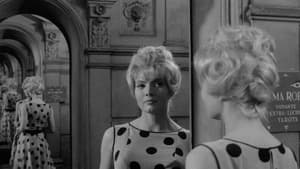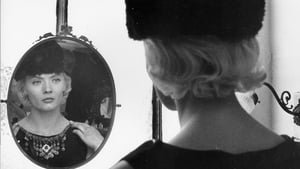Contact: [email protected]
Video Sources 0 Views

Synopsis
[ez-toc]




Introduction
In the realm of old films, where black and white often reigns supreme, a unique transformation has occurred. The iconic 1962 film, “Cléo from 5 to 7 Colorized,” has undergone a captivating metamorphosis into the colorful realm of cinema. The decision to colorize this classic has sparked discussions about the significance of breathing new life into old movies. In this article, we delve into the evolution of “Cléo from 5 to 7 Colorized,” exploring the art and technique of colorization, weighing the pros and cons, and ultimately unraveling the cinematic brilliance of this reimagined masterpiece.
Read Media File Transfer Agreement: Terms and Conditions
Read FAQ
The Evolution of Cléo from 5 to 7 Colorized
“Cléo from 5 to 7 Colorized 1962” is not just a film; it is a bold experiment, a journey that challenges the traditional perception of old movies. The decision to colorize this 1962 gem was undoubtedly a meticulous one. As technology advances, the capability to breathe new life into classic cinema grows, offering audiences a chance to experience these films in a way that aligns more with contemporary visual expectations.
The choice to colorize “Cléo from 5 to 7 Colorized” opens a gateway to a fresh perspective, inviting a new generation to appreciate the narrative nuances and visual brilliance of a bygone era. It is a testament to the enduring appeal of the film that its creators believed it could transcend the temporal boundaries and resonate with audiences even today.
Reviving the Past: The Art and Technique of Colorization
Colorized movies bridge the gap between the past and the present, providing a vibrant lens through which audiences can engage with classic narratives. The art and technique of colorization involve meticulous processes aimed at restoring and enhancing the visual appeal of old films.
The colorization process is a delicate craft, requiring a deep understanding of the original aesthetic intent of the filmmakers. Talented technicians meticulously add color to each frame, ensuring that the essence of the film remains intact while presenting it in a more contemporary light. Techniques used in colorizing black and white movies have evolved over the years, becoming more sophisticated and nuanced, breathing life into characters and landscapes that were once confined to shades of gray.
Pros and Cons of Colorizing Cléo from 5 to 7 Colorized
As with any artistic endeavor, colorizing old films like “Cléo from 5 to 7 Colorized” comes with its own set of considerations. On the positive side, colorization can make classic films more accessible and relatable to modern audiences. It can enhance the emotional impact of scenes, bringing out the subtleties and nuances that might be lost in black and white.
However, there is a delicate balance to be maintained. Some argue that colorization risks diluting the artistic integrity of the original work. The black and white palette often holds a certain timeless charm and aesthetic appeal that is unique to classic cinema. Striking this balance requires a careful approach to ensure that the essence of the film is not compromised while presenting it in a visually appealing manner.
The Cinematic Brilliance of Cléo from 5 to 7 Colorized: A Visual and Narrative Analysis
To appreciate the significance of colorizing “Cléo from 5 to 7 Colorized,” one must first understand the brilliance of the original film. Directed by Agnès Varda, the movie unfolds in real-time, following the character Cleo, a Parisian fortune-teller, during a pivotal two-hour period. The film masterfully captures the essence of life, love, and the inexorable passage of time.
In its colorized adaptation, “Cléo from 5 to 7 Colorized” takes on a new dimension. The vibrant hues add depth to Cleo’s character, transforming her world into a kaleidoscope of emotions. The color palette becomes a storytelling tool, accentuating the film’s themes and drawing viewers into Cleo’s journey with an immersive visual experience.
The choice of colors becomes symbolic, reflecting Cleo’s emotional state and the evolving narrative. Warm tones may signify moments of joy and connection, while cooler hues may evoke introspection and melancholy. The colorization of “Cléo from 5 to 7 Colorized” is not merely a cosmetic upgrade but a thoughtful enhancement that enriches the film’s narrative tapestry.
Preserving Artistic Integrity: Balancing Authenticity and Modern Appeal in the Colorization Process
Colorizing old movies raises ethical questions about preserving the artistic integrity of the original work. Purists argue that altering a film’s color palette can distort the director’s original vision. However, proponents of colorization assert that it is a form of preservation, ensuring that these cinematic treasures remain relevant and accessible to contemporary audiences.
The responsibility falls on the shoulders of film restoration experts who play a crucial role in maintaining the delicate balance between authenticity and modern appeal. These experts must navigate the fine line between enhancing the visual experience and respecting the director’s artistic intent. The goal is not to overshadow the original but to offer an alternative viewing experience that complements and enriches the cinematic legacy.
Conclusion
“Cléo from 5 to 7 Colorized 1962” stands as a testament to the enduring allure of old movies and the ongoing debate surrounding the colorization of classic cinema. As we embrace the colorized adaptation of this timeless classic, it is essential to recognize the importance of preserving the original black and white version. Both versions contribute to a comprehensive appreciation of “Cléo from 5 to 7,” allowing audiences to choose the lens through which they explore its cinematic legacy.
The decision to colorize “Cléo from 5 to 7” opens the door to a broader conversation about the evolving nature of film preservation. It encourages viewers to engage with other notable examples of colorized films, exploring the varied approaches and techniques employed in reimagining cinema’s past. The ongoing dialogue surrounding colorization ensures that old films continue to captivate audiences across generations, sparking curiosity and appreciation for the artistry that transcends time. As we navigate the intersection of the old and the new, the journey of “Cléo from 5 to 7 Colorized 1962” serves as a vibrant reminder that the magic of cinema knows no bounds.














